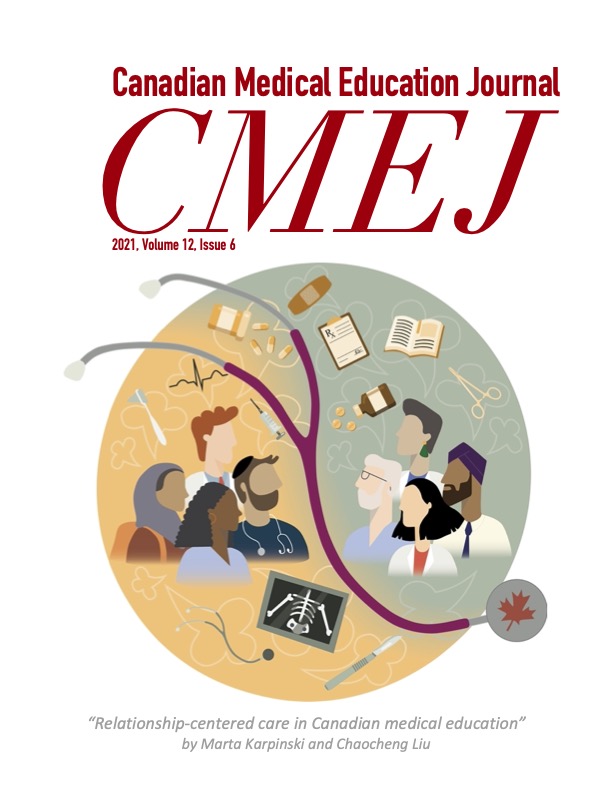A proposed learning environment framework for virtual care
DOI:
https://doi.org/10.36834/cmej.71373Abstract
The way in which health care is delivered has rapidly changed since the onset of the COVID-19 pandemic, with a rapid increase in virtual delivery of clinical care. As a result, the learning environment (LE) in health professions education, which has traditionally been situated in the bricks-and-mortar clinical context, now also requires attention to the virtual space. As a frequently examined topic in the health professions literature, the LE is a critical component in the development and training of future healthcare professionals. Based on a published conceptual framework for the LE from Gruppen et al. in 2019, a conceptual framework for how the LE can manifest through virtual care space is presented here. The four components of personal, social, organizational, physical/virtual spaces are explored, with a discussion of how they can be integrated into virtual care. The authors provide suggestions that health professions educators can consider when adapting their LE to the virtual environment and highlight aspects of its integration that require further research and investigation.
Downloads
Downloads
Published
Versions
- 2021-12-31 (2)
- 2021-12-06 (1)
How to Cite
Issue
Section
License
Copyright (c) 2019 John Liu, Heather Buckley, Kendall Ho, Maria Hubinette , Arman Abdalkhani, Cheryl Holmes , Nawaaz Nathoo

This work is licensed under a Creative Commons Attribution-NonCommercial-NoDerivatives 4.0 International License.
Submission of an original manuscript to the Canadian Medical Education Journal will be taken to mean that it represents original work not previously published, that it is not being considered elsewhere for publication. If accepted for publication, it will be published online and it will not be published elsewhere in the same form, for commercial purposes, in any language, without the consent of the publisher.
Authors who publish in the Canadian Medical Education Journal agree to release their articles under the Creative Commons Attribution-Noncommercial-No Derivative Works 4.0 Canada Licence. This licence allows anyone to copy and distribute the article for non-commercial purposes provided that appropriate attribution is given. For details of the rights an author grants users of their work, please see the licence summary and the full licence.











